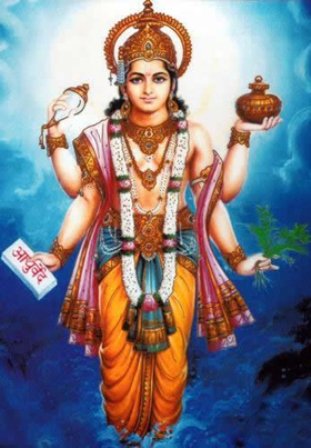An Introduction to Ayurveda, The Science of Life
What is Ayurveda?
Ayurveda is a Sanskrit word deriving from two roots ayur, meaning life and veda, meaning knowledge. Ayurveda is a holistic medical science, which includes the philosophical, psychological, physical, and spiritual aspects of life. This science of life comes from the Rishi's of ancient India over 5000 years ago. Disease and epidemic ravaged areas of the indus river valleys prompting Rishi's or wise men to retreat to the himalayan mountains to meditate on the secrets of eternal health. Their finding formed the basis of Ayurveda, this developed into an entire body of medical teaching, which over time spread though out the indian continent as far as Shri Lanka. The colonization of India in the 16 century ended the hay day of Ayurveda. Forcing this traditional medicine to hide in rural areas of India and buddhist buddhist monasteries for centuries until independence of India in 1948. Ayurveda has been gradually spreading around the world since.
How does Ayurveda work?
The basis of Ayurvedic principles are found in the three Doshas, Pitta, Vata, and Kapha. Doshas are elemental energies that make up every living body. Each Dosha performs different physiological functions in our body. The subdosha's are comprised of the five elements ether, air, fire, water, and earth.
Pitta: Qualities reflecting the elements of fire and water. Pitta governs all of the body's "agnis" or heat. It controls the metabolic system and how we digest foods, how we metabolize our sensory perception, and how we decipher what's right from wrong. When pitta is in balance: Leads to contentment and intelligence. When pitta is out of balance: will lead to anger and ulcers.
Vata: Qualities reflecting space and air. Vata governs the energy associated with movement (air). This includes breathing, blinking, blood circulation, and the beating heart. Vata is often considered the "King of dosha," since it governs the bodies greater life force and gives motion to pitta and Kapha. When Vata is in balance there will be creativity and vitality. Vata out of balance can produce fear and anxiety.
Kapha: Qualities reflecting water and earth. Kapha governs growth in the body. It supplies water to all parts of your body. Kapha maintains your immune system and lubrication. With the earthly makeup Kapha helps ground pitta and Vata and helps offset any imbalances related to these doshas. When Kapha is in balance there will be love and forgiveness. Kapha out of balance will lead to envy and insecurity.
Doshic states
We all have the three doshas present in their natural proportions. Usually one or two dosha's will be dominate. When all three doshas are in the state of "equilibrium" we are healthy, happy, and whole. An increased state of a particular dosha is present in a greater then normal proportion, also referred to as an "aggravated" or "excess state." An decreased state means a particular dosha is in less than normal proportion, also referred to as an "reduced" or "depleted state."
What's your dosha? find out here http://tridosha.com/self-test
further reading.
Charaka Samhita the most complete and authentic ayurveda book.
read it for free here http://www.charakasamhita.com/
Vincent Lad's : Ayurveda: The Science of Self Healing: A Practical Guide
and the Textbook of Ayurveda: A Complete Guide to Clinical Assessment
ayurveda, the art of being.
Lord Dhanvantari, the Founder of Ayurveda

I leave you all with this vedic invocation
May all be happy. May the peacemakers righteously rule the Earth. Let there be welfare for animals and people of wisdom at all times. May all be happy. May it rain at the proper time. May the Earth produce fruits and seed. May this world be free from famine. May people of contemplation be fearless.
Be well.


